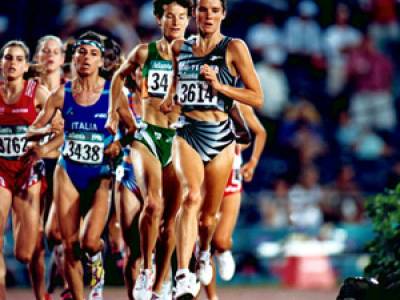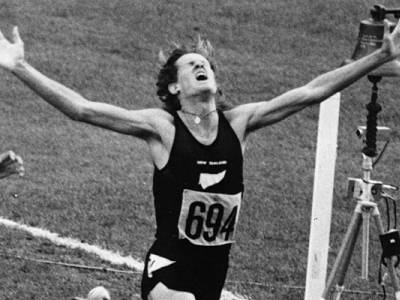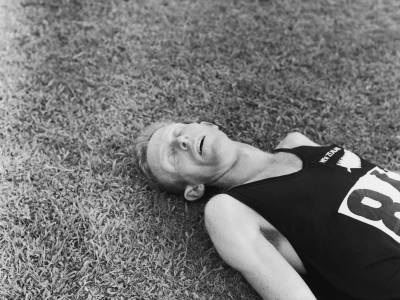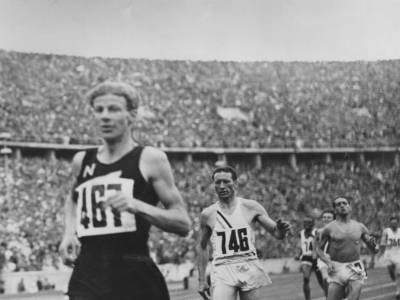Read Episode 1
Read Episode 2
Read Episode 3
Read Episode 4
Read Episode 5
The Black singlet: The Modern Era 2000-2016
Ryan Archibald holds the rare honour of following his father in pulling on the black singlet.
The Men's Hockey veteran has worn the silver fern over 300 times in hockey internationals; Rio is his third Olympic campaign. His father, Jeff, also played hockey for New Zealand at three Olympic Games – winning a gold medal in Montreal, in 1976.
Continued below

Archibald junior takes his motivation, to keep striving for the black singlet, from two places.
“The first is the desire to compete and measure myself against the best hockey players in the world. To be considered world-class and talked about in the same sentence as the world’s best has been a huge internal driver to wear the black shirt,” he says.
“Second is my fascination with the Olympic Games. The pinnacle of all sport, it’s inspired me from my earliest years - probably fuelled by my father’s achievements on that stage.
Continued below

"To stand on the pitch at my first Olympics - 2008 Beijing - wearing the black shirt, admiring the stadium and seeing the Olympic rings all around me is one of the proudest moments in my life. There was a sense of satisfaction to finally to be a New Zealand Olympian, with the opportunity to chase the dream of an Olympic medal.”
***
Not all New Zealand Olympians were born to love the black singlet.
Some adopted New Zealand as their home country. Athletes like Olympic champion single sculler Mahe Drysdale, who was born in Australia (and named after the main island in the Seychelles). Inspired to be an Olympic rower after watching Rob Waddell power to glory in Sydney in 2000, Drysdale became part of rowing’s “Black Singlet Brigade”.
In 2005, when New Zealand rowers stormed to four world championship titles, Drysdale said: “We’ve always heard that people feared the black singlet back in the 80s. I think it's been a while since that's happened… but now people are starting to respect the black." And for good reason - the New Zealand rowing juggernaut went on to snaffle eight Olympic medals between 2008 and 2012.
Continued below
Drysdale’s coach, Dick Tonks (himself an Olympic silver medallist in 1972), explained how the Kiwis had earned that respect by slowly building a culture through winning. “They don't sit on the start line, look across at the Germans, the English, the Americans and the Russians and think, 'Aw, hell'. Those other crews have to look at our black singlets and know they're going to be under threat."
World champion cyclist Linda Villumsen rode in the red and white colours of Denmark at the 2008 Olympics, but after falling in love with New Zealand as a teenage exchange student, became a New Zealand citizen in 2009. On the eve of wearing black at the 2012 London Games, she described her second Olympic crusade as “more happy and lots more proud”. In 2015 – kitted out totally in black from her helmet to her wheels – she was crowned the world individual time trial champion.
***
When Valerie Adams was named the IAAF Women’s Athlete of the Year in 2014, she told the world how proud she was to be a New Zealander.
"I have a passion and a motivation to be competing, especially when I am wearing the black singlet with the single fern,” the double Olympic gold medallist shot putter declared. "New Zealand has got four million people and 60 million sheep so we punch above our weight! To compete against the rest of the world and come out on top, we've got to be proud of that.”
The honour of the black singlet has always loomed large in Adam’s psyche. When she was named in the New Zealand team for her fourth Olympic appearance, after a long and challenging comeback from surgery, she tweeted: “So proud to have the opportunity to compete in the black singlet once again #blessings #grateful #4thGames #LoveIt #LetsDoThis #NZproud #Rio2016.”
The outstanding performances of athletes like Adams and fellow shot put star Tom Walsh have helped drive 1500m runner Nick Willis in his ongoing pursuit for Olympic gold.
"It's really exciting − not only inspiring but there's an accountability to it as well," the 2008 Beijing silver medallist says of his Kiwi team-mates. "As everyone performs you think, 'It's my turn now, I've got to keep the pride of the black singlet going'. Those guys definitely helped propel me to have no choice but to run confidently."
In his build-up to the 2012 Olympic Games, Willis went out “a little too crazy” in a warm-up race in London, and took a 50m lead on the field. “The crowd went absolutely nuts. I thought there must have been a long jump final going on. They couldn’t be cheering for me – a New Zealander… but low and behold, that’s why they were cheering.”
And that’s testament to the power of black.
THE BLACK SINGLET – COOL AND LIGHT
While the original black singlets worn proudly by New Zealand athletes a century ago were heavy and sweaty, today’s Olympic uniform embraces state-of-the-art technology.
The 1920 New Zealand team’s black singlets were made of porous cotton. Today’s fabrics are a mixture of synthetic fibres - born from the need to mimic the breathable aspects of cotton, without soaking up sweat.

The most common yarn used in the New Zealand team’s sportswear is polyester quick dry. It has a hollow core which gives a feeling of lightness and coolness, and effectively removes moisture from the body by swiftly moving it through the fabric to evaporate on the surface. This makes it super comfortable to wear in the heat of competition.
THE BLACK SINGLET - INSPIRING OUR ATHLETES TODAY
“It’s an amazing feeling when you pull it on, it makes you want to make New Zealand proud.” - Tom Walsh, shot put.
"Wearing the black singlet is an honour, it represents me chasing my dreams alongside many other kiwis and those that have gone before," Angie Petty, 800m runner.
“There’s a lot of responsibility that comes with wearing the black singlet, and that’s from the history of all the Olympians that have had such amazing results before us and have set such a high standard.” - Emma Twigg, rowing.
"I'm proud to be a Kiwi and to run in the black singlet.” - Nikki Hamblin, 1500m runner.
"Wearing the black singlet and competing against the best pole vaulters in the world is an incredible feeling. It’s hard for me to think of the impact that I’m having on other New Zealanders, but every time I pull on that black singlet I couldn’t feel more proud.” - Eliza McCartney, pole vault.
"Being able to wear the black singlet has been the biggest honour of my life. I am one of the luckiest people in the world, getting to do what I love for my country." - Shea McAleese, hockey.
"Wearing the black singlet means joining an incredible line of athletes that have represented New Zealand in the past. It's an honour to carry on that tradition." - Jo Aleh, sailing.
Rio 2016 Olympic Summer GamesTweet Share




